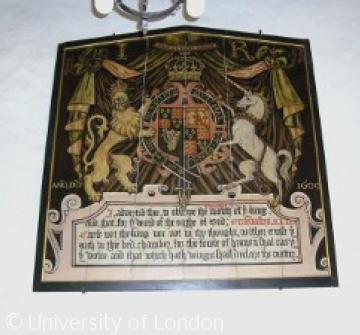Seventeenth-century Exmoor

Royal arms 1609 in Winsford church. Exmoor was not too remote to escape the outcome of conflict between king and parliament in the 1640s. The outbreak of Civil War not only entailed fighting between opposing armies but also aroused latent bitterness between neighbours, social and religious groups, possibly fuelled by rising population. A lthough the people of Exmoor were often regarded as rebellious and independent they were also conservative and there was much support for the king in the west country. The 1640s and 1650s were a time of suffering and uncertainty on Exmoor. As with the reformation a century earlier, community bonds had been severely strained. The parish church and the manor court had traditionally brought people together but attendance at both declined in the later 17th century and the church ales and other entertainments were no longer held. Several communities lost their vicars and landlords, deposed for supporting the king. At Exford the Royalist rector John Hunt was removed in 1646 and a dispute broke out between two rival claimants to the living. It would not be surprising if some parishioners asserted themselves under such conditions. The churchwardens and overseers, in the case of Winsford assisted by the four, later eight, men chosen by the parish, looked after the church, gave alms to travellers and maintained the poor. Most parishes appointed a registrar to keep a record of births, marriages and deaths in 1653. For more on the Civil War on Exmoor see under Exmoor Forest and Molland Church
Content generated during research for the paperback book 'Exmoor: The making of an English Upland' (ISBN 13 : 978-1-86077-597-0 ) for the England's Past for Everyone series


